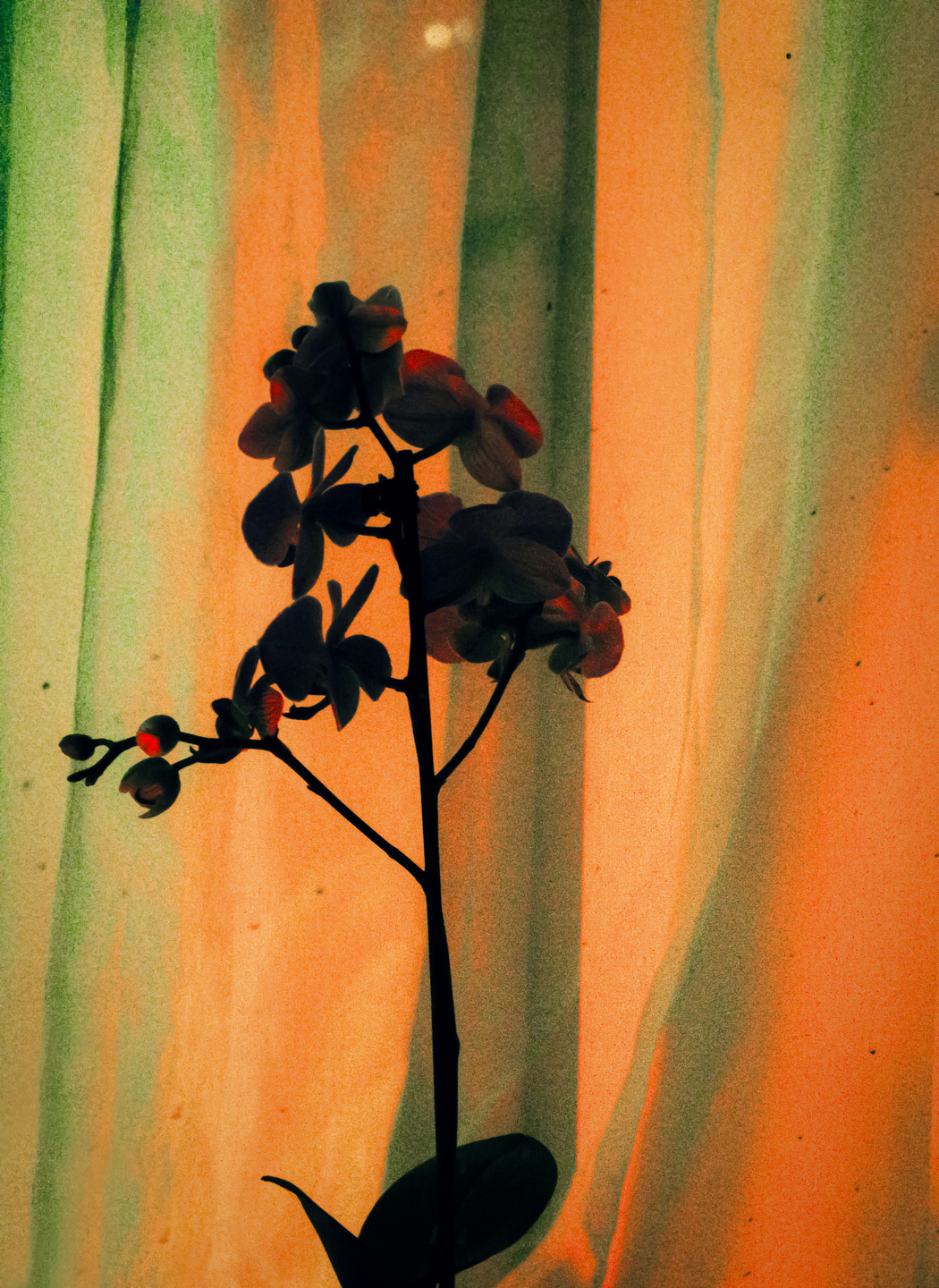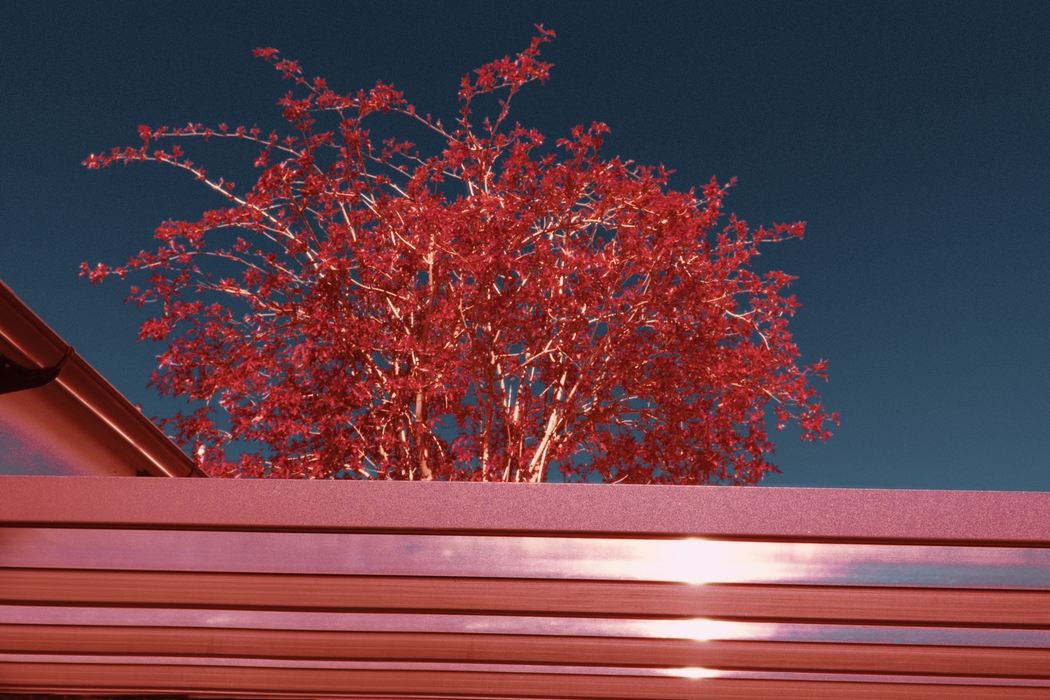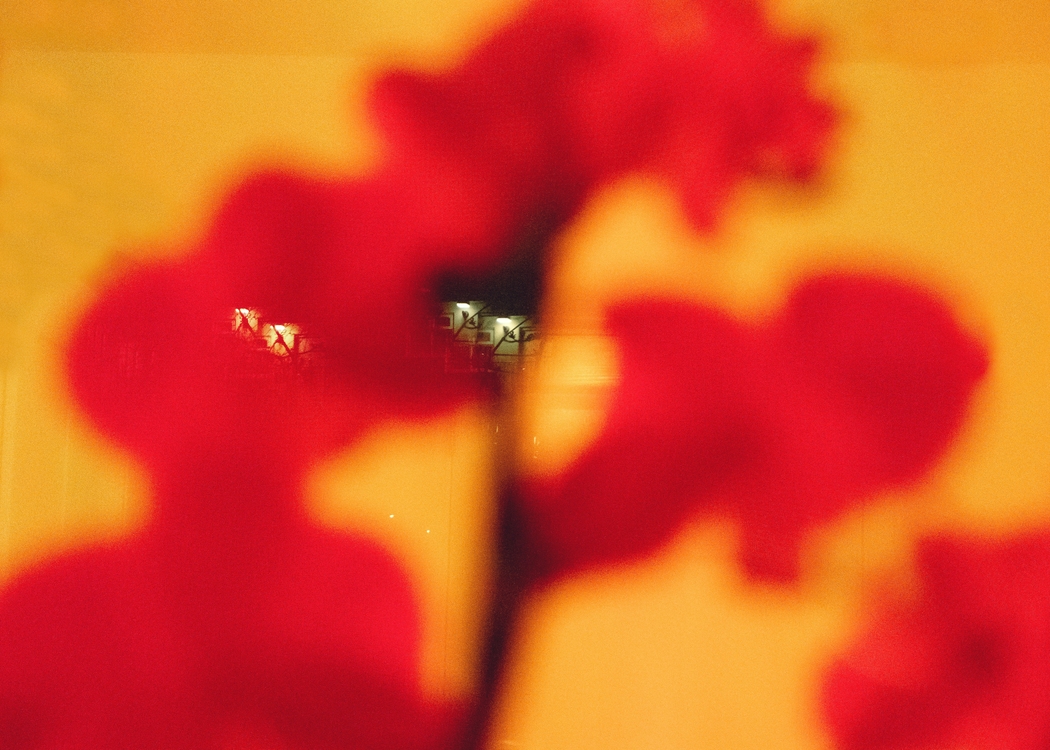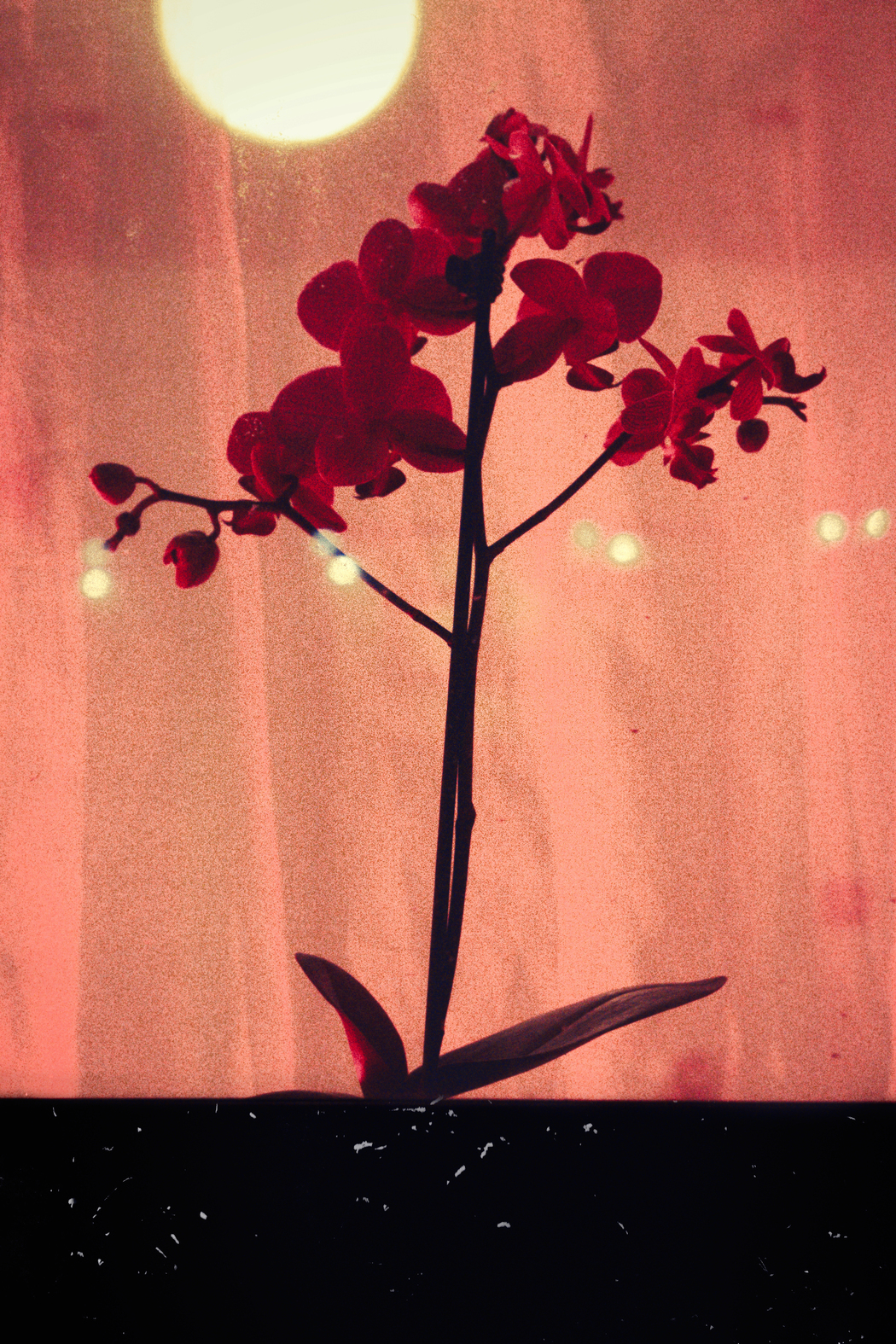Xinyi Liu
 Xinyi Liu | 炁 khi
Xinyi Liu | 炁 khi
Your project Khi draws from Chinese metaphysics and Buddhist philosophy. How do these philosophies shape your approach to photography?
Khi is deeply shaped by both Chinese metaphysics and Buddhist philosophy—not just as intellectual frameworks, but as lived, sensory practices. These traditions emphasize the interconnectedness of all things, the flow of energy (炁), and the impermanence of form. This understanding guides how I approach photography—not as a tool to document, but as a means to attune to the subtle dynamics of space, light, and consciousness.
Working with film and natural morning light, I allow the environment to unfold slowly before me. Light moves gently through windows, casting shifting shadows across flowers, surfaces, and still objects. In those fleeting moments, I’m not trying to capture a subject, but to sense and respond to the breath of space itself—how light pulses, how energy lingers in silence, how perception opens when we become fully present.
Buddhist meditative awareness informs the pace and presence of the work. The process is intentionally slow, contemplative, and embodied. Rather than imposing control, I practice a kind of visual listening. Photography becomes a way to participate in the quiet dialogue between body and space—a trace of consciousness as it merges outward into the world.
Ultimately, Khi offers a space for viewers to pause and step into this subtle field of awareness. In a time of constant acceleration, the work invites stillness. It speaks to the dissolving boundary between self and environment, suggesting that consciousness isn’t isolated within us—but flows, like light and shadow, through everything we touch.
What does ‘attunement’ mean to you in the context of your visual practice?
In my visual practice, attunement is about entering into a subtle, intuitive alignment with space —it’s the process of harmonizing myself with the environment, sensing not only what is visible, but also the energetic field that holds everything together. It’s a quiet dialogue between myself and the space, a form of coordination and merging where boundaries soften, and I begin to feel the presence of the field of energy that surrounds and connects all things.
When I photograph, especially in Khi, I’m not trying to capture an image in the conventional sense. Instead, I allow my body and senses to open up, letting light guide me, observing how it flows through a space, how it rests on objects, how shadows stretch and disappear. This process is slow and contemplative, almost meditative. Through attunement, photography becomes a form of presence—a way to trace the invisible resonance between body, consciousness, and environment.
Ultimately, attunement for me is about feeling the rhythm of a space, merging with it, and letting that shared energy guide the image into being.
 Xinyi Liu | 炁 khi
Xinyi Liu | 炁 khi
You mention using film and natural morning light—what role does light play in your exploration of consciousness?
Light, for me, is more than a visual element—it’s a carrier of presence, a subtle language through which consciousness reveals itself. In Khi, I work exclusively with natural morning light because it holds a particular softness and transience. It enters space gently, shifting slowly, casting delicate shadows that seem to breathe. This quality of light mirrors the meditative state I try to enter during the process—quiet, open, and aware.
Light becomes a way to sense the invisible. It reveals how energy moves through a space—not in a fixed or literal way, but through texture, temperature, and rhythm. When I photograph with film, I embrace its sensitivity to these nuances. Film has a certain slowness and imperfection that aligns with how I experience consciousness—not as something sharp and defined, but fluid, layered, and always in motion.
In essence, light in my work is both subject and collaborator. It animates the space, opens a window into what’s just beyond the visible, and invites the viewer to slow down and feel. Through light, I explore how consciousness extends beyond the mind—how it merges with environment, and becomes part of the world around us.
Many of your images evoke stillness and quiet. How do you cultivate that sense of presence in your process?
Stillness and quiet are not just aesthetic choices in my work—they’re the ground from which the images emerge. To cultivate that sense of presence, I begin by slowing down—both physically and mentally. I often work early in the morning, when the world is quieter, and the light is soft and unhurried. This time of day allows me to enter a meditative state where I can listen, observe, and feel the space without expectation.
The process is intuitive and embodied. I spend time just being in the space—breathing, noticing how light moves, how shadows stretch or retreat, how the air feels. I don’t rush to take the photograph. Sometimes I wait for something to reveal itself, or I move gently through the space until I sense a moment of alignment—a quiet resonance between myself, the environment, and the camera.
I think of it as a form of tuning in—letting go of control and allowing the energy of the room, the stillness of an object, or the flicker of light to guide me. Film photography supports this slowness; every frame feels deliberate, almost sacred. In that way, the images become traces of presence— of a shared stillness between body, breath, and space.
 Xinyi Liu | 炁 khi
Xinyi Liu | 炁 khi
Why was it important for you to work with shadows, curtains, and delicate textures in this series?
In Khi, working with shadows, curtains, and delicate textures was essential because they embody the quiet, often unseen forces that shape our perception. Light and shadow, in particular, are central—they’re not just visual elements, but metaphysical symbols. In Chinese philosophy, light and shadow represent yin and yang—two complementary energies that exist in dynamic balance. This duality is at the heart of the series. I see photography not just as capturing objects, but as sensing this shifting balance—the way light softens into shadow, the way stillness holds quiet movement.
Curtains play a subtle but powerful role—they filter and shape the light, creating thresholds between interior and exterior, known and unknown. They remind me of the veil between consciousness and what lies beyond it. The textures—whether from cloth, flowers, walls, or air itself—offer a material sensitivity. These delicate surfaces become sites of resonance, holding traces of breath, energy, and silence.
By focusing on these elements, I wanted to invite viewers into a slower, more attuned mode of seeing—one where the intangible becomes briefly visible. In this way, the series explores 炁 not as an abstract theory, but as a lived, sensory experience—one that arises in the quiet interplay between softness and structure, presence and absence, yin and yang.
Khi seems to hover between material and immaterial—how do you define the “energy” your images seek to capture?
To me, the energy in Khi is not something abstract or symbolic—it’s something I feel as a lived, embodied presence. It’s the magnetic field between things, the subtle 场域 (field) that exists within and around all forms. In Chinese metaphysics, and also in many animist and Buddhist philosophies, there’s a deep belief that everything—objects, spaces, even shadows—holds 灵 (spirit) and carries a unique energetic frequency. This is what I’m attuning to when I photograph.
I often describe it as a kind of magnetic atmosphere—something you can’t see directly, but you can sense when you slow down enough to feel it. It’s in the way light moves through a curtain, how a shadow lingers on a wall, or how a flower seems to exhale in silence. These aren’t just visual moments—they’re energetic expressions. Film photography allows me to register these vibrations gently, slowly, without over-defining them.
So, when people say the images feel suspended between material and immaterial, I take that as a sign that the energy is working. I’m not trying to depict something literal, but to open a space where viewers can feel what’s usually invisible—the quiet presence that exists in all things when we take the time to notice.
 Xinyi Liu | 炁 khi
Xinyi Liu | 炁 khi
What does a typical day in your practice look like when working on a meditative series like this?
When working on a meditative series like Khi, my days are intentionally slow and quiet. I usually begin early in the morning, when the light is soft and the world hasn’t fully awakened. That time of day holds a kind of stillness that I try to carry into the entire process. I don’t start by shooting right away—instead, I spend time just being in the space, observing how the light moves, how shadows begin to form, how the energy of the room feels.
I often sit in silence for a while, almost like entering meditation. I allow my breath and body to sync with the space. This helps me become more sensitive to subtle shifts—to the movement of light across a curtain, the flicker of reflection on a surface, the quiet vibration of still objects. I treat the camera like a listening device, responding only when I feel a moment of resonance or alignment.
Because I work with film, there’s no instant feedback. That helps preserve the contemplative rhythm—I’m not chasing images, but allowing them to reveal themselves. After shooting, I often write or reflect, noting how the space felt or what thoughts arose during the process. It’s as much about cultivating presence as it is about creating images.

Leave a Reply